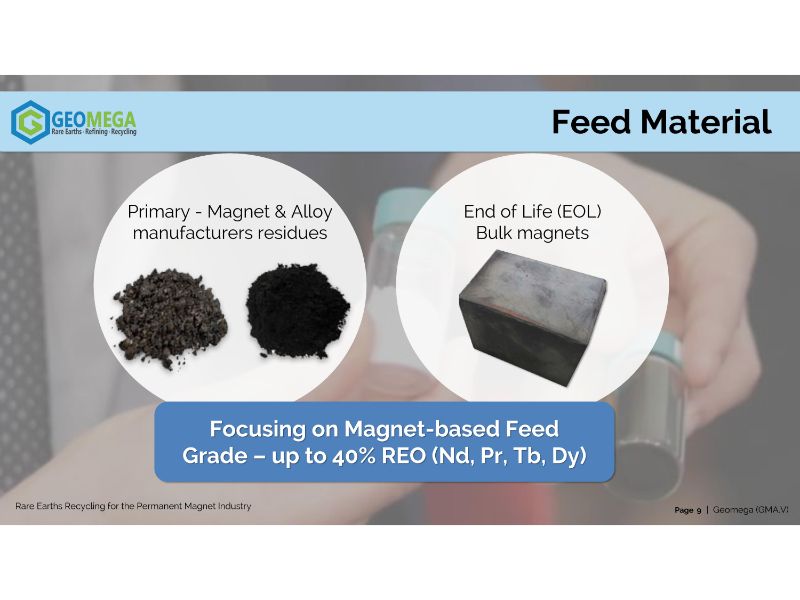Learn more about our plans for ISR technology in the near term and beyond.
The objective is to sell it all into the European market. After this, we’d love to sell into the US but the US abandoned any kind of production of magnets in the ’90s. Now they’re slowly trying to attract it back. Here’s a quick summary of our model. What we are going to be processing is 1.5 tons per day of magnet waste. What is magnet waste? It gets produced from grinding down the magnets down to final shape and, as well, the end of life material. It’s all running at 30% rare earth elements. It doesn’t matter if I’m getting a magnet from China, from the US, from Canada or from wherever — it’s always going to be running at approximately 30%. It always has those four elements: NdPrDyTb. I don’t have to deal with any of the cheap elements, like lanthanum and ceriums.
…
What are we expecting in 2030? Even more. That is the time to be looking at rare earths production, but through refining. What’s the future for us? This technology starts with magnets, but there are other feeds that are using rare earth elements today which are not being recycled because nobody has the technology!
We are looking to apply ISR to other rare earth feeds.
On top of that, we are looking to other material — strategic or critical materials which are not being recycled today or not being properly refined.
On top of this, we are looking to then set up the facility to process concentrates from other mining companies who want to put a mine into production. That way, they have another option — not to only send it to China, but they can send it to us as well.
A quick summary of the rare earth sector — those are the four elements that go into the magnets. The bottleneck is the refining capacity in China. The usages are roughly well spread between production and demand, but the most important thing is the permanent magnet sector, which is 25-30% of the usage, represents 80% of the value of the entire rare earth sector. That’s why we need to focus on that sector — the magnets. The driver of the industry is the magnet. You can see the demand growth from automotive, but at the same time we see all the other sectors continuing to grow in terms of demand for magnets. Why are we here? Because of China. We don’t want to see that spike in prices again. Actually that spike is really bad for demand. We are trying to be in production today with a very innovative solution in terms of processing rare earths.
Neodymium pricing — everything is very flat and stable right now, which is much better. We see demand may be returning to the market because the prices are much more stable.
Learn more,
“Do the math”, 2019-11

